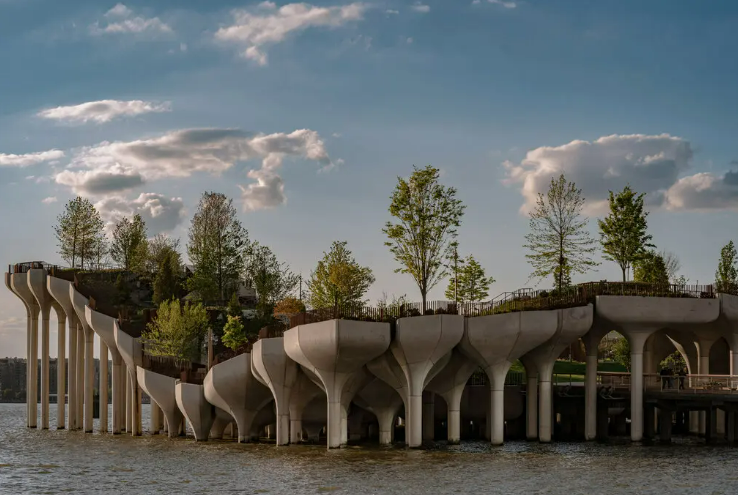By Colin Kim, age 16, Groton School, Groton, Mass.

Credit...Amr Alfiky/The New York Times
A vibrant collection of vlogs gushes over New York City’s newest attraction, the “floating oasis” Little Island. An artificial skerry at the once fatigued Pier 55 right in the middle of the Hudson River, it’s new, it’s unique and it’s definitely eye-catching. It’s home to evergreen gardens, families of lush trees and even a festive amphitheater that are sure to glow up Instagram feeds. Nevertheless, it’s the exact opposite of what it’s supposed to represent. Parks are for families, for experiencing the peace and cohesion that our planet organically gifts us, values that are nowhere to be seen within the bulky belly of Little Island.
The edifice is supported by an array of plump concrete foundations the designers call “tulips.” These poles are shaped in an inorganically rigid way, drawing an odd contrast with the authentic flora on the island itself, and they ultimately juggle with visual instability by precariously cramming all their mass toward their peaks. There are over a hundred of these pillars, each of which holds a unique height, a haphazard collection composing a complexly unbalanced arrangement. It is difficult to see that such visual clutter was designed with visitors in mind, contrary to the claims of Barry Diller, the developer, who hoped to “see people being really happy.” Whilst the novel structure may capture attention at first, it simply doesn’t fit with the aesthetic of a “park,” in which familiar comfort should embrace each and every passing family. In the colorful district dubbed the “Playground,” no swings, seesaws nor jungle gyms are in sight, and no dogs skip around the designer furniture.
The ironic juxtaposition of a man-made structure that roots off the natural landscape demonstrates how Little Island accomplishes its goal in the least organic way possible. Even the Ancient Greeks warned us not to mess with nature: They passed down the stories of Phaethon, who grabbed the sun chariot from the gods, then proceeded to nearly burn and freeze the Earth simultaneously. Like Phaethon’s disorderly driving routes did to our planet, Little Island intrudes into the scenery of our Hudson River with a dizzying assortment of man-made tourist attractions. The pavement pushes us through predetermined pathways and separates us from freely exploring the greenery. It’s all very jarring: The image of the mega-rich throwing around obscene sums of money to lure in the blindly joyous masses with a contrived projection of “nature” could have been pulled straight from a dystopian screenplay.
Little Island, much like an untouchable contemporary art piece at the nearby Whitney Museum, is the most alluring from afar. Up close, it’s an unfriendly extrapolation of the ideas of its self-conscious creators, not a resort for New York City and its families.